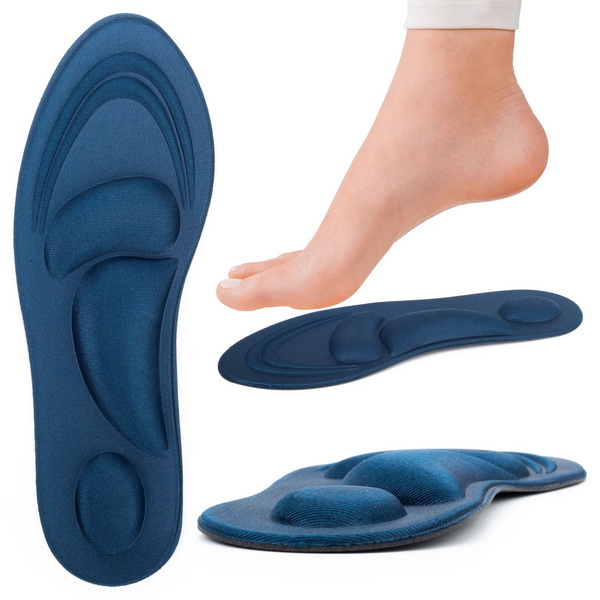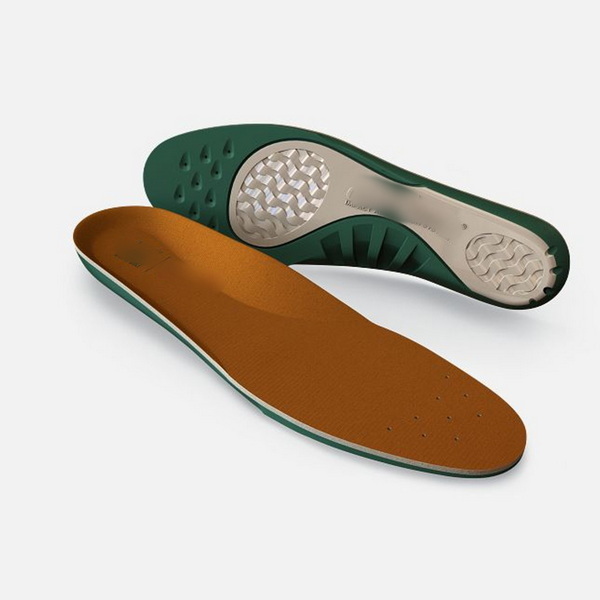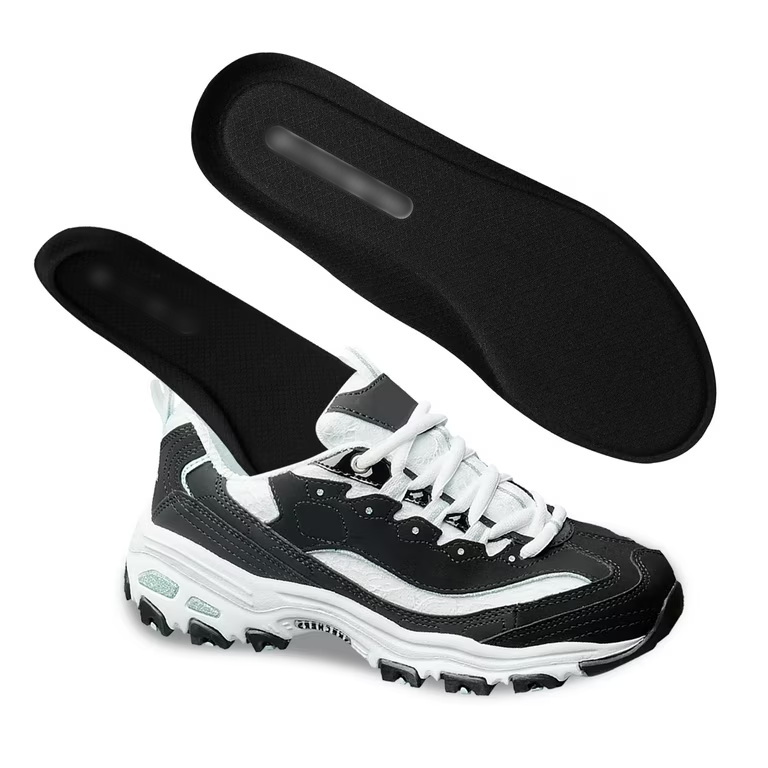Views: 222 Author: Edvo Publish Time: 2025-11-18 Origin: Site











Content Menu
● What Is Memory Foam and Why Is It Used in Insoles?
>> Properties That Set Memory Foam Apart
● Key Factors Affecting Durability and Longevity of Memory Foam Insoles
>> Manufacturing Quality and Material Density
>> User Weight and Movement Patterns
>> Environmental Exposure and Care
● Average Lifespan: What to Expect from Memory Foam Insoles
● Extending the Lifespan of Memory Foam Insoles
● OEM Innovations in Memory Foam Insoles for Longer Wear
● How Memory Foam Insoles Compare to Other Materials
>> Memory Foam vs. Gel Insoles
>> Memory Foam vs. Cork and Leather
● Sustainable Practices in Memory Foam Insole Manufacturing
● Customization Options for Global OEM Buyers
>> Customization Possibilities
● User Experience: Real-Life Scenarios
● Frequently Asked Questions (FAQ)
>> 1. How long do memory foam insoles typically last?
>> 2. What can shorten memory foam insole lifespan?
>> 3. Can I wash memory foam insoles in a washing machine?
>> 4. Are memory foam insoles suitable for high-impact sports shoes?
>> 5. What signs indicate I need to replace my memory foam insoles?
With the global demand for comfortable and supportive footwear on the rise, memory foam insoles have become a staple product for brands, wholesalers, and OEM footwear producers worldwide. Understanding the lasting power of memory foam insoles is crucial for businesses aiming to maximize product value and customer satisfaction. Whether you are sourcing insoles for your shoe brand or informing your clients as a leading Chinese manufacturer, knowing the real-life lifespan of memory foam insoles—along with methods to extend it—is essential for your long-term business success.

Memory foam is a viscoelastic polyurethane material that reacts to temperature and pressure by molding itself to the unique shape of the wearer's foot. This property makes it especially popular in insole solutions designed for superior cushioning, pain relief, and personalized comfort.
- Excellent pressure distribution
- Custom fits for a wide range of foot shapes
- Effective shock absorption
- Flexibility for different footwear styles
- Adaptability in thickness, density, and firmness based on customer needs
These properties make memory foam an ideal material for OEM customization, catering to fashion brands, sports shoe companies, and medical footwear markets.
The lifespan of memory foam insoles isn't fixed—it varies according to multiple factors such as manufacturing quality, use case, user behavior, and environmental exposure. As a manufacturer, understanding and addressing these factors in design and production will yield more durable products.
The density of memory foam plays a pivotal role in determining how well it stands up to repeated compression. High-density foams retain their original structure longer than low-density alternatives. Additionally, premium-grade materials and advanced production techniques further enhance resilience and longevity.
Daily wear, especially in high-impact environments like sports or intensive labor, accelerates compression and breakdown. Conversely, memory foam insoles used casually or in low-activity settings tend to last longer. For OEM clients, matching product specifications to intended use ensures ideal longevity.
Heavier users and those with unique walking patterns exert more stress on insoles, causing faster wear. Custom OEM solutions often include reinforced support zones targeted at pressure points, maximizing durability without sacrificing comfort.
Open-ventilation athletic shoes, snug-fitting dress shoes, and heavy-duty work boots all create different stress and moisture conditions for insoles. Well-designed OEM insoles take these factors into account, using tailored structures and covers for lasting performance.
Exposure to moisture, heat, and improper cleaning methods can reduce lifespans of memory foam insoles by degrading the foam structure. For international brands, providing end users with clear care instructions helps both protect insoles and maintain brand reputation.
For most users, memory foam insoles typically last between six and twelve months before they lose their resilience and ability to return to their original shape. Lifespan expectations can vary based on individual usage patterns and product quality. Below is a more detailed breakdown:
- Office and daily casual use: Approximately nine to twelve months
- Active sports and standing work: Typically four to eight months
- Medical or therapeutic footwear: Variable, based on patient needs and routines
Monitor how memory foam insoles perform over time. Warning indicators telling you it's time for a replacement include:
- Persistent flattening or reduced bounce-back effect
- Less cushioning or arch support
- Visible cracks, tearing, or discoloration
- Developing foot discomfort or pain that did not exist before
OEM manufacturers often address these problems by recommending regular replacement cycles and developing more robust designs tailored to specific market segments.
While it's true that memory foam insoles have a finite lifespan, several practical steps can extend their usefulness. These tips apply to both everyday users and businesses distributing footwear products:
Rotate Used Insoles: Switching between multiple pairs prevents repetitive wear in high-stress zones.
Remove Insoles to Air Out: After daily use, allow memory foam insoles to dry completely outside the shoe—this reduces moisture build-up and odor.
Clean Gently: Spot clean with mild soap and water, then air dry. Avoid direct sunlight or heat, which can degrade foam quality.
Store Shoes and Insoles Properly: Cool, dry storage environments help prevent material breakdown between uses.
Match Correct Insole to Intended Activity: Use general comfort insoles for daily wear and specialized or reinforced models for sports or work footwear.

Leading OEM manufacturers invest in R&D aimed at producing longer-lasting memory foam insoles. This is achieved through material science, product engineering, and process optimization.
- Dual-layer foam construction for added resilience
- Moisture-wicking and antimicrobial covers
- Reinforced heel and arch support structures
- Eco-friendly or recycled foam blends for sustainability
- Broad customization in thickness, density, and contouring
Advanced OEM lines are designed not only for durability but also to address specific buyer needs—such as retail, professional, or medical product channels.
Many footwear brands and wholesalers ask which insole material provides the best lifespan and value. Understanding these comparisons helps buyers make smarter decisions.
Memory foam insoles provide a custom fit and moderate lifespan, typically six to twelve months. Gel insoles, on the other hand, offer enhanced shock absorption and tend to last longer, especially under intense impact sports scenarios.
EVA foam boasts a lightweight structure and extended durability, often exceeding one year with proper use, but may lack the personalized comfort and pressure relief of memory foam. Memory foam's superior moldability makes it the preferred choice for comfort, while EVA excels in sports and high-impact applications.
Cork and leather insoles bring a high-quality, natural feel and long-term wear but can be heavy and less adaptive in terms of fit. Memory foam insoles are unmatched in their ability to conform to the foot, especially for brands seeking affordable luxury and personalized comfort.
Environmental responsibility is increasingly important for footwear manufacturers and global brands. As market demand shifts, leading OEM factories now adopt:
- Recycled PU blends in production
- Low-emission, energy-efficient manufacturing processes
- Eco-friendly packaging solutions
- Biodegradable top covers and fabrics
These innovations meet the growing expectations of international buyers and end-users seeking sustainable products with longer lifespans—and fewer replacements.
Customization is vital for brands, wholesalers, and shoe manufacturers seeking competitive advantage. As a top Chinese OEM supplier, a broad range of enhancements ensures memory foam insoles meet diverse requirements.
- Branding: Logos and product colors tailored to customers' branding strategies
- Material Upgrades: Premium foams, natural fiber tops, or recycled materials by request
- Sizing: Custom length, width, and thickness adjustments for global markets
- Fit Optimization: Specific arch supports, heel cups, or pressure spot zones
- Packaging: Bulk, retail, or eco-friendly packaging options per export needs
Partnering with experienced OEMs streamlines development processes and helps brands stay relevant in fast-changing markets.
As the insole market grows internationally, buyers seek partners who provide proven design expertise, flexible production, and consistent quality assurance. Working with a leading Chinese footwear insole OEM offers the advantages of:
- Advanced materials research
- Scalable, high-volume output
- Competitive pricing and flexible order quantities
- Rigorous quality checks at every stage
- Fast lead times and reliable international logistics
For brands and wholesalers, these guarantees translate into higher customer loyalty, lower warranty returns, and stronger market positioning.
Business customers and end-users alike benefit from choosing memory foam insoles matched to their needs. Consider these sample scenarios:
- Retail shoe brands sourcing insoles for fashion lines: value comfort and medium-term durability to enhance customer reviews.
- Athletic brands designing shoes for runners: combine memory foam with gel or EVA for hybrid models that balance fit and longevity.
- Medical footwear suppliers: need tailored support zones to increase comfort for patients with foot pain or alignment issues.
These practical applications demonstrate how quality memory foam insole design directly influences both product value and user satisfaction.
Memory foam insoles offer a blend of personalized comfort, shock absorption, and moderate durability, with lifespans typically ranging from six to twelve months. By understanding the key factors that influence insole longevity and committing to best practices in care and OEM design, brands, wholesalers, and manufacturers can optimize product performance and customer satisfaction. As a leading Chinese manufacturer, continually innovating and customizing memory foam solutions ensures ongoing partnership success with clients worldwide.

Memory foam insoles generally last between six and twelve months, depending on use frequency, user weight, and the environment. Office workers and casual wearers may see around one year of comfort, while athletes and laborers may need to replace insoles more often.
Frequent and high-impact use, moisture exposure, heavier weight usage, and improper cleaning methods such as machine washing or drying in hot conditions can reduce the useful life of memory foam insoles.
It is not recommended. Gentle hand washing with mild soap and air drying is best. Washing machines and heat can damage the foam's internal structure, causing premature wear.
Memory foam insoles can be used in high-impact sports shoes, but may require reinforcement or combination layering. For best results, inquire about custom OEM solutions with extra durability or hybrid technology for athletic applications.
Visible flattening, deteriorating comfort, persistent odor, tears, cracks, or new development of foot pain are clear signs that your memory foam insoles should be replaced.